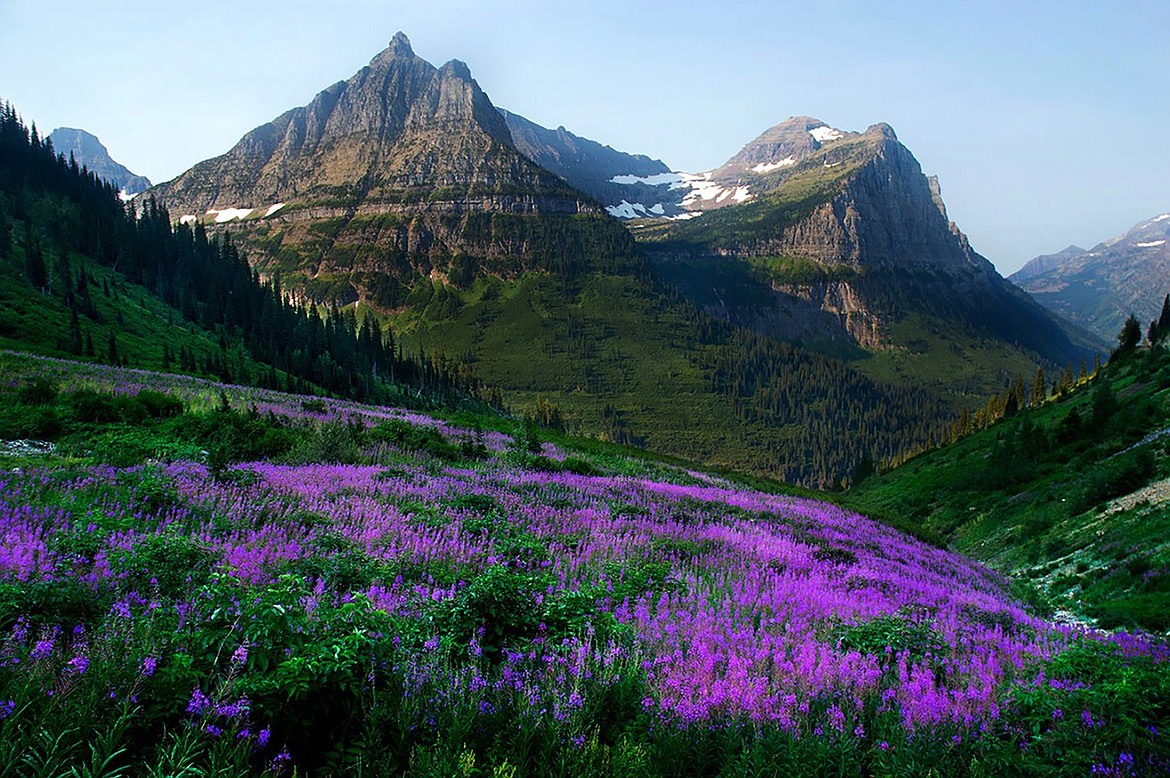Glacier's telecommunications plan approved
The National Park Service on Wednesday approved Glacier National Park’s telecommunications plan to address cellular and internet coverage in certain areas of the park.
In an effort to keep up with changing communication needs and advances in technology, the plan will address deficiencies in Park Service radio, phone, computer and data-based telecommunications systems that support park operations by upgrading to new technologies and/or removing unnecessary telecommunications infrastructure as needed, park officials stated in a press release.
“A lot of this is installing or replacing equipment that is already there. For the most part, the public is not going to notice any of these upgrades,” park spokeswoman Gina Gerzman said. “There are some repeaters that we could possibly be putting in place in the park that are still under consideration. If we can achieve what we want by placing repeaters outside of the park, we are going to look at those options first.”
The approved plan includes phone system upgrades, improved internet speed and access, improved electronic file and information sharing, remote access to digital video security systems, more reliable reporting for utility alarms, improved radio communications in areas where radio coverage is insufficient, and backup radio communications as well as possible radio repeater sites in the park’s recommended wilderness, including Elk Mountain and Looking Glass Hill.
Some of the changes to infrastructure and equipment as a result of Park Service telecommunications improvements include:
installing or replacing telecommunications infrastructure and equipment, such as radio antennas and microwave dishes;
replacing three equipment poles (similar in size and appearance to a telephone pole) with 40-foot lattice frame towers and extending the height of one 40-foot tower to 80 feet (approximately 6 feet wide at the base);
installing a radio repeater at the Loop on the GTSR, including an estimated 30-foot mast, antenna, and solar panels on the roof of the existing comfort station;
installing temporary radio repeaters for use during short-term non-emergency projects or situations;
possibly installing permanent radio repeaters (consisting of an approximately 5x4x5-foot equipment shelter, 20-foot mast, and solar panels) on Elk Mountain and other sites in recommended wilderness if NPS radio communications are not sufficiently improved by other actions. Other areas in recommended wilderness preliminarily identified for possible permanent repeaters include the Belly River, Nyack, or Two Medicine areas, or on Mt. Brown;
upgrading an existing temporary repeater at Looking Glass Hill, also in recommended wilderness, until the repeater can be moved to a location outside the park. Recent developments indicate the Looking Glass Hill repeater may be moved outside the park without first requiring the upgrade.
The plan does include a strategy for commercial cellular and/or Internet access for public and the National Park Service, but only in places that are already developed, such as Many Glacier, Rising Sun, Two Medicine, and Lake McDonald Lodge.
“A lot of people want to know, how is this going to improve my cell service if I were to visit Glacier National Park. The only place you might see a difference will be around the developed areas that already have service,” Kerzman said. “You are not going to get cell service on Going-to-the-Sun road or when you are in the backcountry wilderness. This will only provide for improved technology for communications in the already improved areas.”
The plan establishes conditions and parameters on the placement, size, amount, and type of commercial telecommunications infrastructure and equipment. Only commercial infrastructure with minimal visibility and impacts to park resources shall be permitted, such as micro cell sites or wireless access points, with only towers less than 80-feet in height allowed. Highly visible infrastructure will not be permitted under the plan, including large-scale towers. The plan will not permit commercial telecommunications infrastructure in recommended wilderness or in the park’s backcountry zone and service must be confined to developed areas as much as possible.
“You are not going to suddenly see large-scale towers going up inside the park. The plan does not allow for that. Commercial providers still have to submit a proposal and then a site-specific review would have to be completed,” Kerzman said. “As much as possible, we want the footprint of commercial communications services to be confined to the developed areas in the park. A lot of that is not controllable and there is going to be some spillover along the lake and road, but the service provider will have to limit that as much as they can. We are trying to keep the wilderness wild.”
For more detailed information on actions in the plan, the Comprehensive Telecommunications Plan EA and Finding of No Significant Impact are available on the NPS Planning, Environment & Public Comment (PEPC) website.


